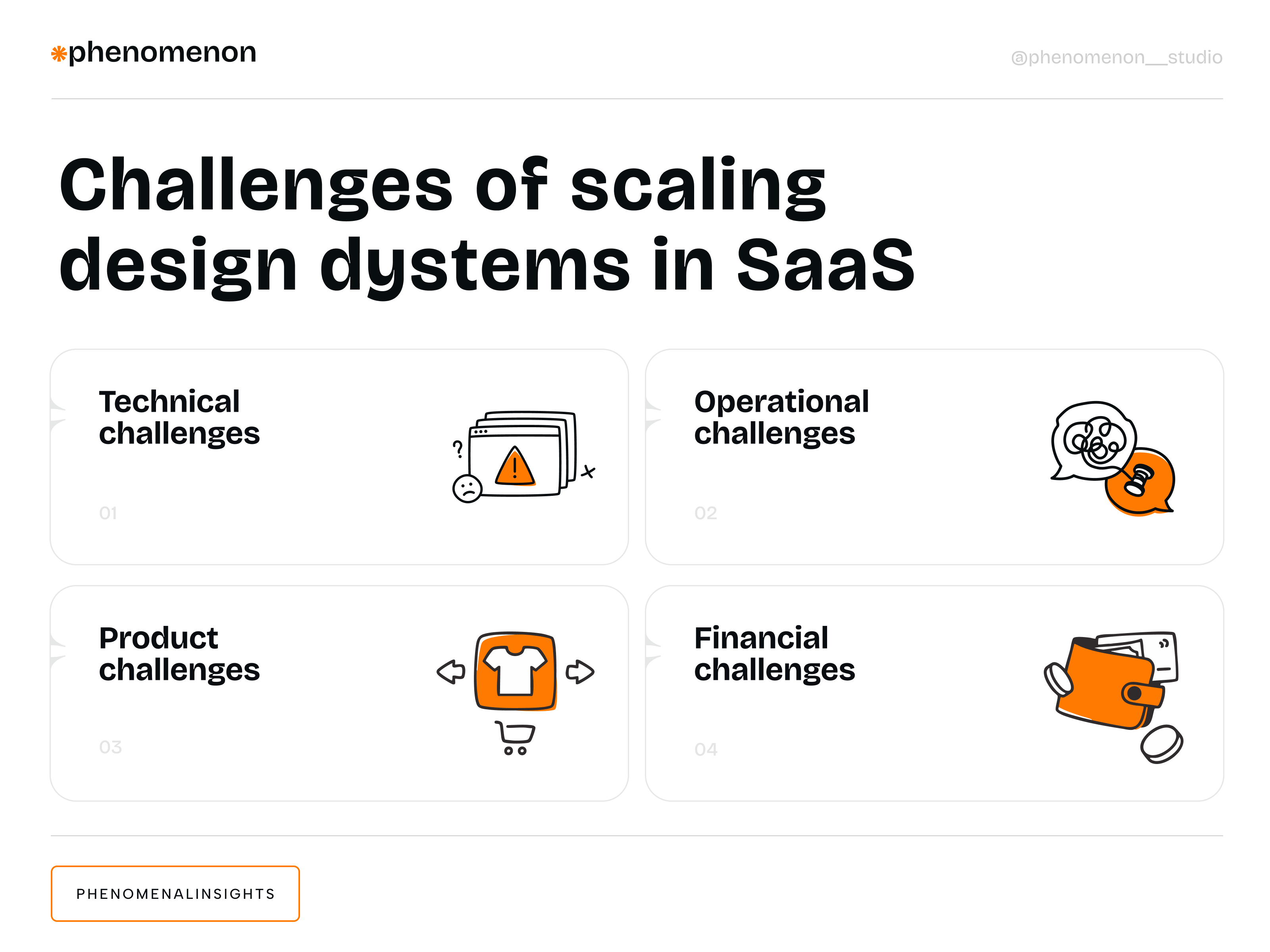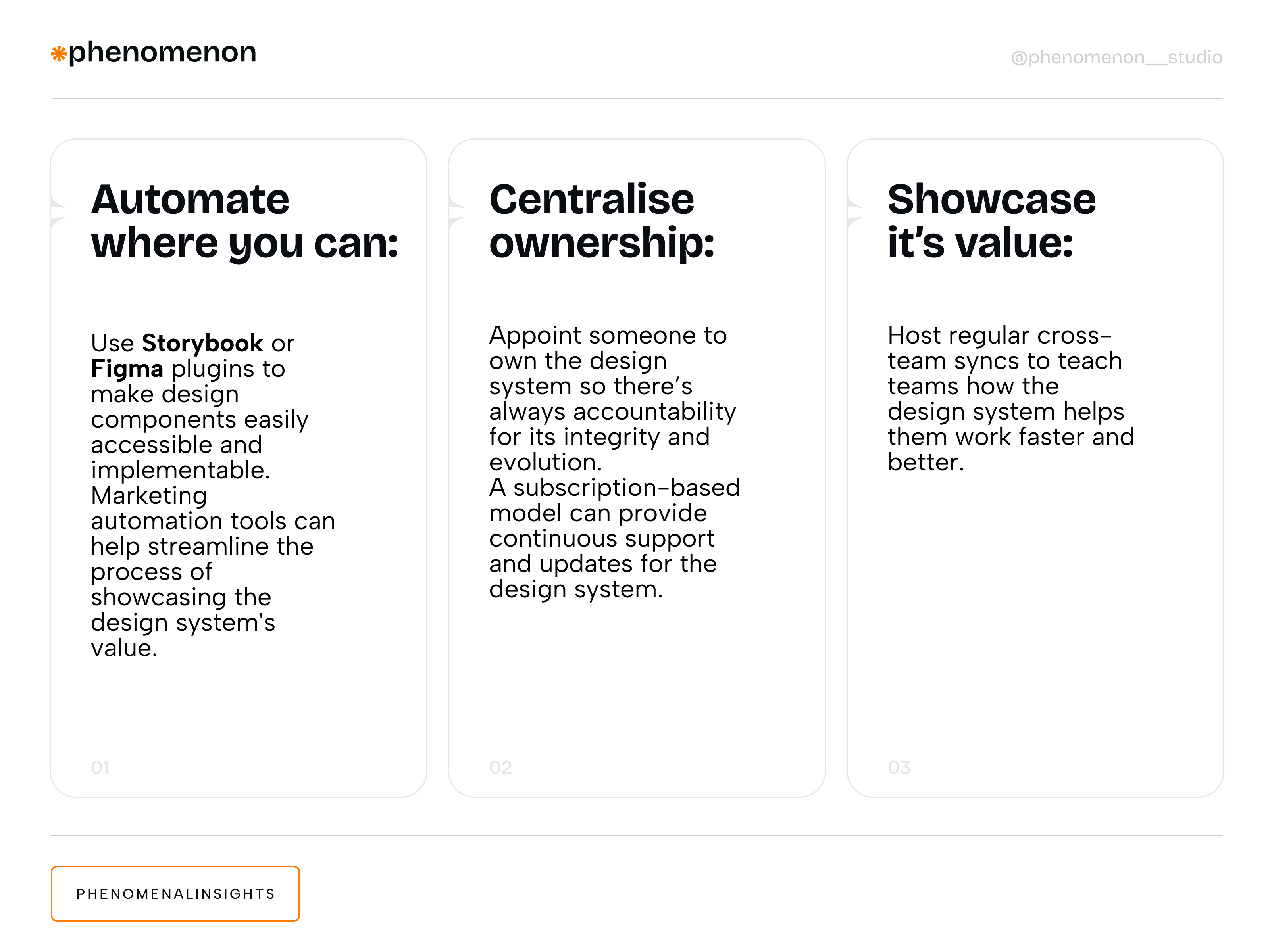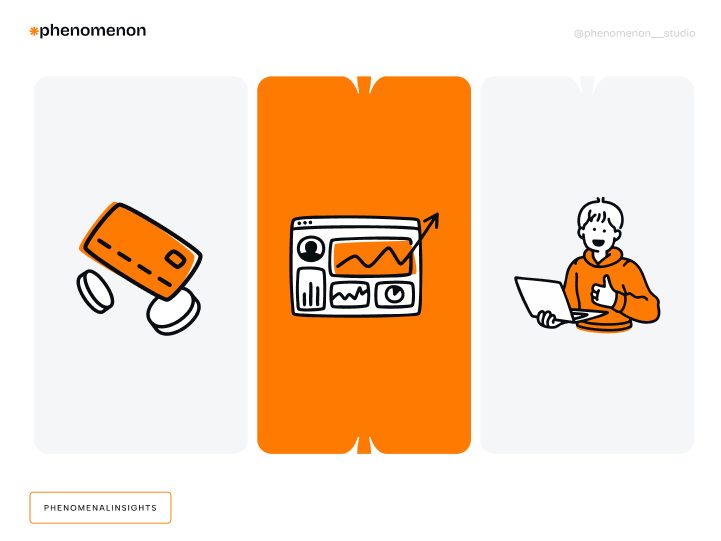Here’s a closer look at why scaling design systems in SaaS is so hard and how to fix it.
Design systems are the backbone of scalable SaaS products. They bring together reusable components, design guidelines and patterns that speed up development, keep branding consistent and enhance the user experience. These systems are more than a tool for product design; they’re a strategic asset for growth, contributing significantly to the overall business value of SaaS products.
For SaaS companies, scaling a design system while growing fast can feel overwhelming. From technical limitations to operational bottlenecks, the challenges pile up quick. However, leveraging SaaS advantages, such as eliminating high IT costs and enabling faster upgrades, can enhance scalability and innovation in SaaS product development. But these hurdles are not insurmountable. With the right strategies in place, SaaS teams can overcome these obstacles and unlock the full potential of their design systems. Additionally, integrating project management features into SaaS platforms can enhance workflow efficiency, making it easier for teams to collaborate and stay organized.
Here’s a closer look at why scaling design systems in SaaS is so hard and how to fix it.
Introduction to SaaS
SaaS (Software as a Service) is a cloud-based model that delivers software applications over the internet, eliminating the need for users to install and maintain software on their own devices. This model offers significant advantages, such as reduced maintenance and setup time for users, as well as increased affordability and flexibility. SaaS application development involves creating software applications that can be accessed through a web browser, mobile app, or API, making it a versatile solution for various business needs.
The SaaS model has revolutionized the software industry by providing scalable and cost-effective solutions. With the global market value of SaaS apps reaching $145.5 billion in 2021, it’s clear that SaaS products are in high demand. This competitive business domain requires careful planning and a deep understanding of the different types of SaaS products available. Whether it’s for enterprise resource planning, customer relationship management, or other business functions, SaaS software continues to drive innovation and efficiency in the software applications market.
Scaling Design Systems in SaaS Applications
Scaling a design system is not just about adding new components or updating styles. SaaS platform development assists enterprises in transitioning from legacy systems to modern, subscription-based services, ensuring that scalable design systems offer flexibility, cost reduction, and efficient scalability. It requires alignment across technical, operational, product and financial fronts. SaaS software development services support scalable design systems by enhancing performance, availability, and scalability for businesses. Here’s a breakdown of these challenges and how they affect growing SaaS teams:

1. Technical Challenges
Growing user bases push SaaS products and their underlying software applications to their technical limits, making the selection of the right technology stack crucial. This can directly impact how well a design system works across different codebases and frameworks. Here are the challenges:
- Infrastructure Limits: Increased traffic or poorly optimized code can slow down performance and usability.
- Data Integration: Syncing data across servers and systems can create inconsistencies that break design system functionality.
- Framework Diversity: Integrating a design system into multiple frameworks and ensuring it works across teams is no easy feat.
Additionally, adopting a multi-tenant architecture ensures data security and scalability, making it easier to manage updates and provide cost-effective solutions.
Cloud providers play a crucial role in managing the infrastructure that supports these software applications, facilitating the development, hosting, and utilization of applications.
How to Fix It:
- Invest in scalable infrastructure early. Optimise your database and backend before you need to.
- Standardise frameworks and development practices when possible to ensure design components integrate seamlessly.
- Run regular testing cycles to identify and fix technical issues before they snowball.
2. Operational Challenges
Rapid growth stresses operational capacity, especially when it comes to team collaboration and onboarding. Here are the challenges:
- Hiring and Onboarding: Recruiting designers and developers for a software development team is time consuming, especially when they also need to be trained on an existing design system. Modern SaaS applications can streamline onboarding and collaboration processes.
- Cross-Team Consistency: Without centralised processes, teams work in silos and the design system is not used consistently. A well-coordinated SaaS product development team ensures cross-team consistency.
- Governance: Clear policies are needed to manage contributions while keeping quality and avoiding fragmentation.
How to Fix It:
- Create a comprehensive onboarding guide for your design system. This will reduce time to efficiency for new hires.
- Appoint a design system manager or governance team to oversee its use. Ensure the vendor manages various aspects of the design system, including maintenance and updates.
- Simplify collaboration by hosting regular cross-team syncs to ensure everyone is aligned on how to implement and evolve the design system.
3. Product Challenges
Product growth means more features and more complexity. This can put pressure even on the best designed design systems. Here are the challenges:
- Consistency vs Customization: Teams may need to adapt components for specific use cases but over customization can break consistency. Enterprise SaaS products are designed to meet specific operational needs and maintain consistency. Developing a minimum viable product (MVP) can help balance these needs by focusing on core functionalities first.
- Prioritization: Without buy-in the design system might take a backseat to feature development and priorities get misaligned. Highlighting other benefits such as improved accessibility for remote work and enhanced scalability can help in gaining buy-in.
- User Experience Risks: Poor scaling of the design system can result in inconsistent interfaces and frustrated users. To mitigate this, it is crucial to gather user feedback regularly, which can provide insights for improving the user experience.
How to Fix It:
- Define clearly what customization is allowed and establish rules for extending the system without sacrificing consistency.
- Champion the design system’s role by showing how it speeds up feature development and UX.
- Include design system improvements in the product roadmap so they’re prioritised alongside new features.
4. Financial Challenges
Committing resources to build and scale a design system requires convincing stakeholders of its value. Here are the challenges:
- Budget Allocation: Small SaaS teams struggle to justify the upfront costs of building and maintaining a robust design system. Additionally, software updates provided by SaaS vendors can reduce costs and improve efficiency. Selecting a suitable subscription model and pricing strategy is crucial for effective budget allocation.
- Proving ROI: The benefits of a design system (like efficiency gains) may not be visible immediately so it’s harder to get buy-in. A well-maintained design system can also enhance customer relationships and drive business growth. Effective financial management is essential to demonstrate the ROI of these investments.
How to Fix It:
- Measure the impact of your design system through metrics like time-to-market or developer efficiency.
- Show long term cost savings by demonstrating how reusability reduces redundant work.
- Use small wins to demonstrate ROI early on like streamlining the launch of a new feature thanks to standardised components.
Building a Scalable SaaS Product
Building a scalable SaaS product starts with a well-validated SaaS idea and a solid understanding of the target audience. SaaS development involves creating, deploying, and maintaining software applications delivered over the Internet as a service. A scalable SaaS product should be designed with a scalable architecture that can handle increased load as the user base grows, adjusting dynamically to meet growing demand.
SaaS application development platforms, such as those provided by leading cloud providers, offer the necessary infrastructure to support scalable SaaS products. By leveraging cloud computing services, SaaS developers can create products that are not only scalable but also secure and performant. Understanding market trends and customer needs is crucial in this process, as it ensures that the SaaS product remains relevant and competitive.
Incorporating these elements into the SaaS development process helps in building robust and scalable SaaS solutions that can adapt to the evolving needs of the market. Whether you’re developing a new SaaS application or enhancing an existing one, focusing on scalability and leveraging the right tools and platforms is key to success in the SaaS industry.
Design System Governance
Ensuring Consistency and Quality
Design system governance is crucial for SaaS companies to ensure consistency and quality across their applications. A well-governed design system enables SaaS providers to maintain a unified brand image, streamline development, and improve user experience. By establishing clear guidelines and standards, SaaS companies can ensure that their design system is scalable, flexible, and aligned with their business goals. Effective governance also involves continuous monitoring and evaluation of the design system to identify areas for improvement and implement changes as needed. This is particularly important for SaaS applications, which are often used by multiple users and require a high level of consistency and quality to meet customer expectations. By investing in design system governance, SaaS providers can improve customer satisfaction, reduce development costs, and increase their competitive advantage in the market.
Collaboration and Communication
Aligning Teams for Effective Work
Collaboration and communication are essential for SaaS companies to deliver high-quality applications and services. By aligning teams and stakeholders, SaaS providers can ensure that everyone is working towards the same goals and objectives. Effective collaboration involves using cloud-based tools and platforms to facilitate communication, share knowledge, and track progress. This enables teams to work together seamlessly, regardless of their location or time zone. SaaS companies can also use collaboration tools to engage with customers, gather feedback, and iterate on their applications to meet evolving customer needs. By prioritizing collaboration and communication, SaaS providers can improve productivity, reduce errors, and increase customer satisfaction. This is particularly important in the SaaS model, where customers expect rapid deployment, continuous updates, and high-quality support.
Change Management
Adapting to New Processes and Technologies
Change management is critical for SaaS companies to adapt to new processes and technologies. The SaaS industry is constantly evolving, with new trends, technologies, and customer expectations emerging all the time. To stay competitive, SaaS providers must be able to adapt quickly and effectively to these changes. This involves having a robust change management process in place, which enables teams to assess, plan, and implement changes with minimal disruption to customers. Effective change management also involves communicating changes to customers, providing training and support, and monitoring feedback to ensure a smooth transition. By investing in change management, SaaS companies can reduce the risk of errors, improve customer satisfaction, and increase their ability to innovate and compete in the market. This is particularly important for SaaS applications, which are often mission-critical and require a high level of reliability and uptime. By leveraging cloud computing, SaaS providers can quickly scale and adapt to changing customer needs, while also reducing the complexity and cost of traditional software development and deployment.
Why Growth in Cloud Computing Makes it Even Harder
When SaaS companies grow fast the challenges above become even more pronounced. The pressure to release new features quickly means taking shortcuts that undermine the design system.
- Faster Development Cycles: Tight timelines leave no room for design system integration and inconsistencies follow. Data centers and cloud services play a crucial role in supporting the infrastructure needed for scalable design systems.
- Team Expansion: New hires have limited understanding of the system and fragmentation follows. The service SaaS model, with its service-oriented approach, can help manage the complexities of rapid growth by providing automatic updates, cost savings, and flexibility. Additionally, leveraging cloud infrastructure allows businesses to easily adjust resources based on user demand, ensuring continuous software updates without disrupting user experience.
- Silos: Growing teams work independently and design decisions get misaligned.
How SaaS Providers Address Growth Pressure:

Grow Your SaaS Team with Enterprise SaaS Products and a Design System
Scaling a design system isn’t easy but it’s worth it. Host servers support the infrastructure needed for scalable design systems. For SaaS companies looking to maintain brand consistency, user experience, and efficiency, the effort is worth it. By tackling the technical, operational, product, and financial challenges, you can build a design system that grows with your company. SaaS development services can drive innovation and efficiency, transforming validated concepts into market-ready SaaS applications.
Want to grow your SaaS team? Start with the right tools and expertise. Modern SaaS solutions can drive innovation and efficiency for growing SaaS teams. Work with Phenomenon Studio to level up your design systems, streamline communication, and build solutions that scale. Let’s do this!













